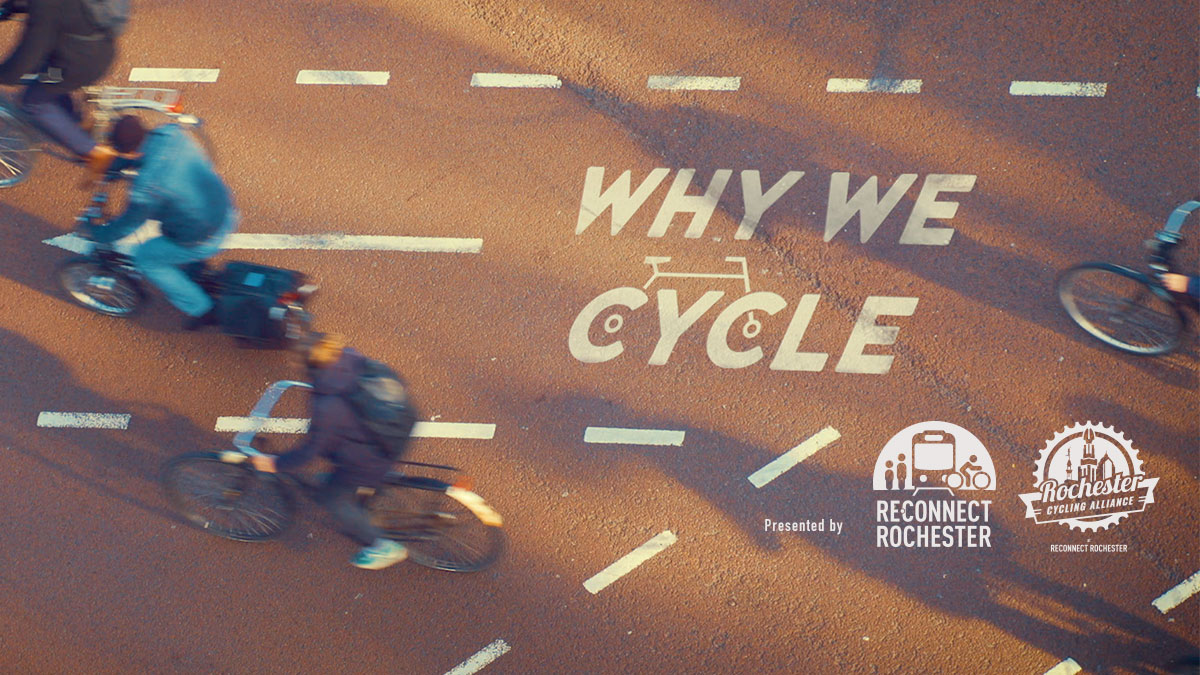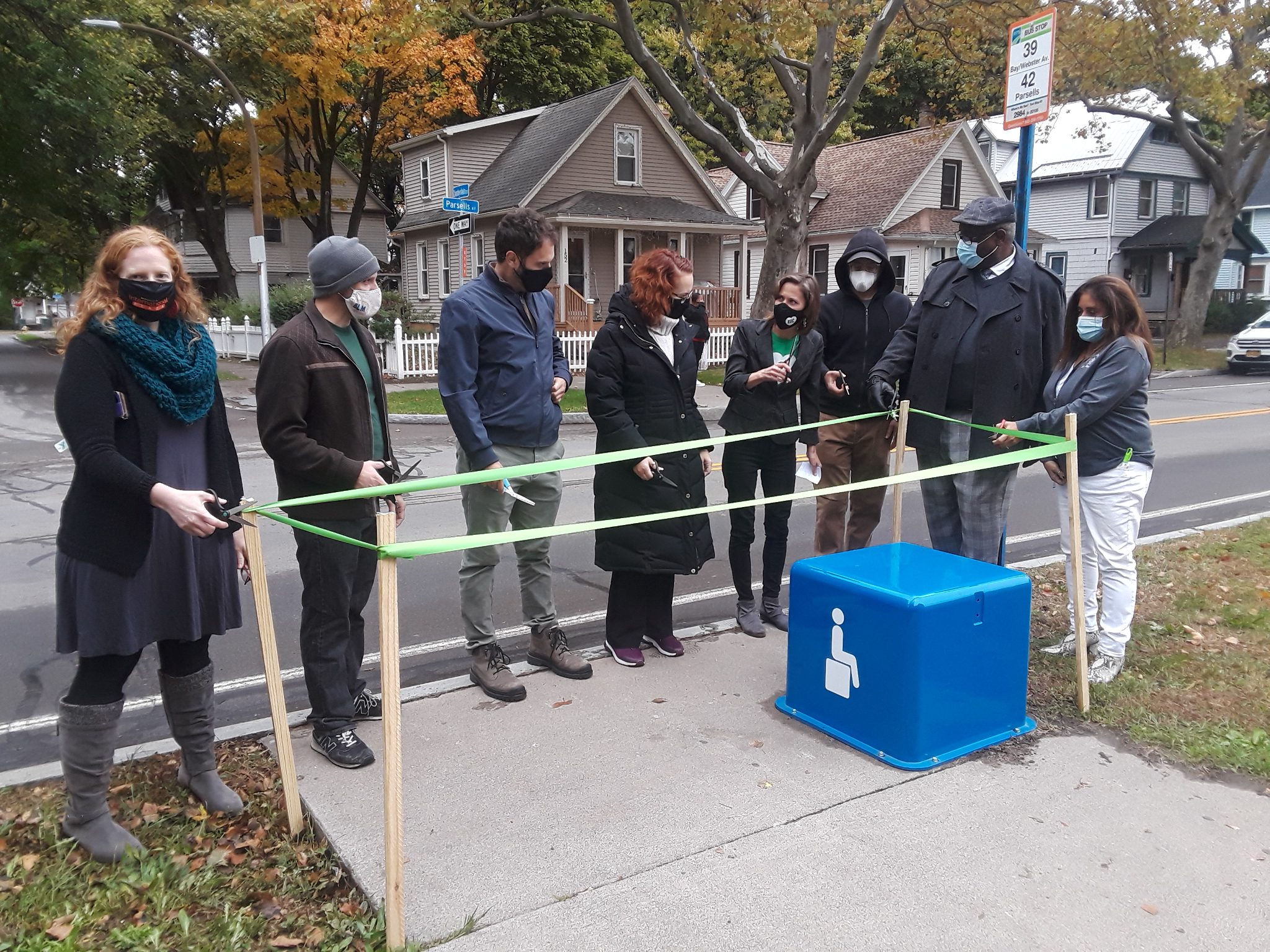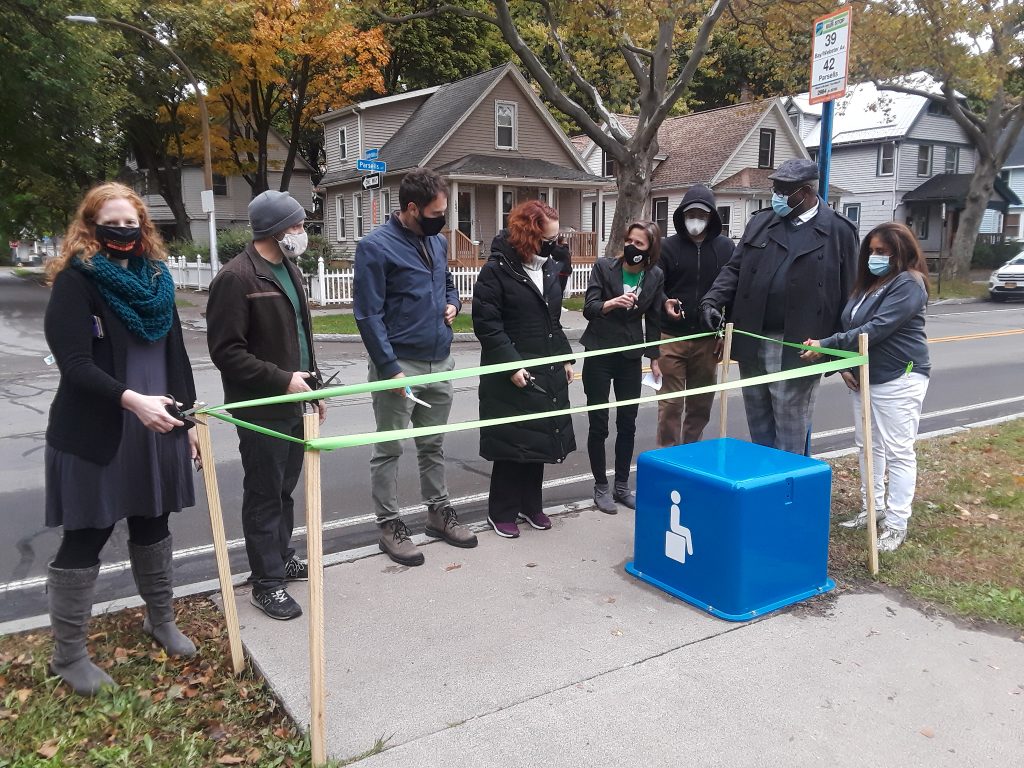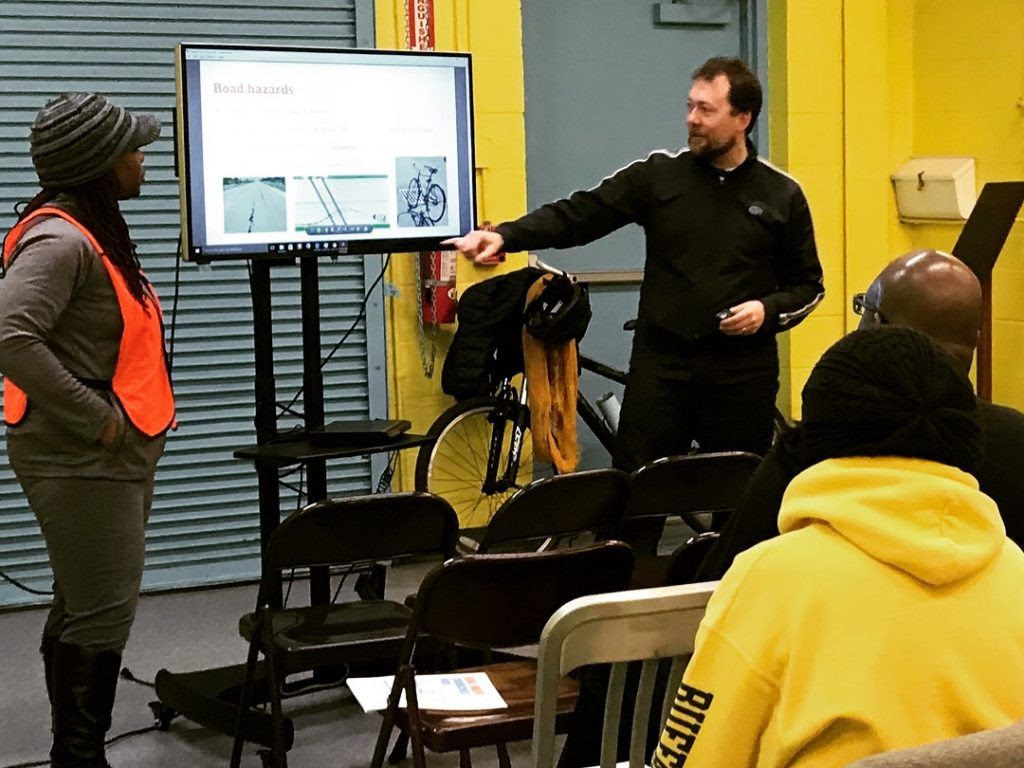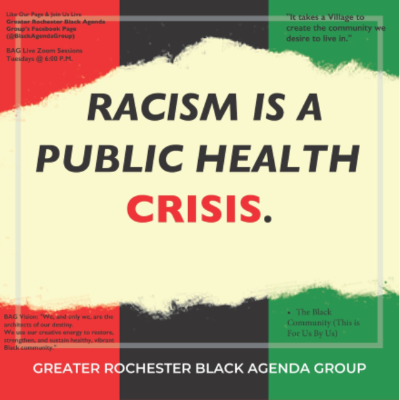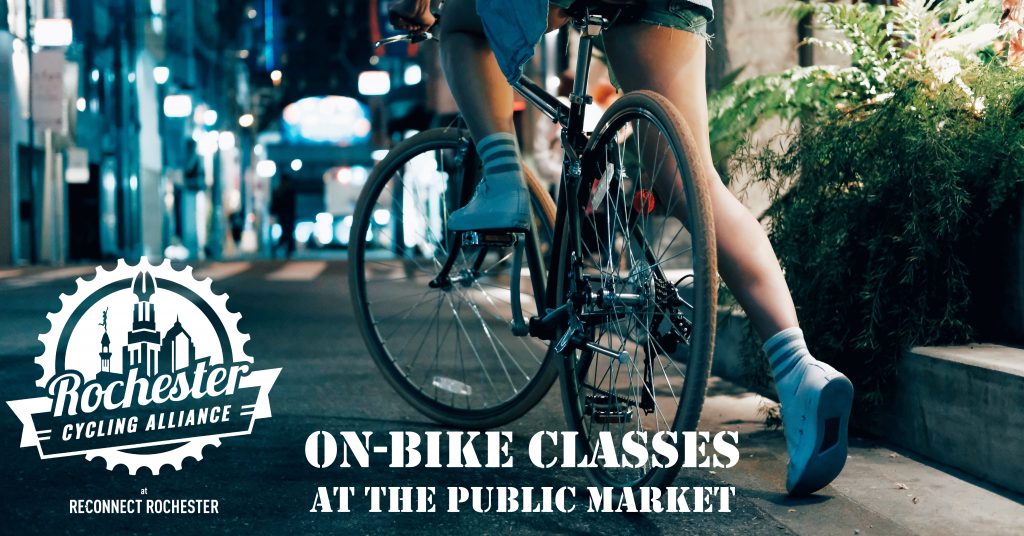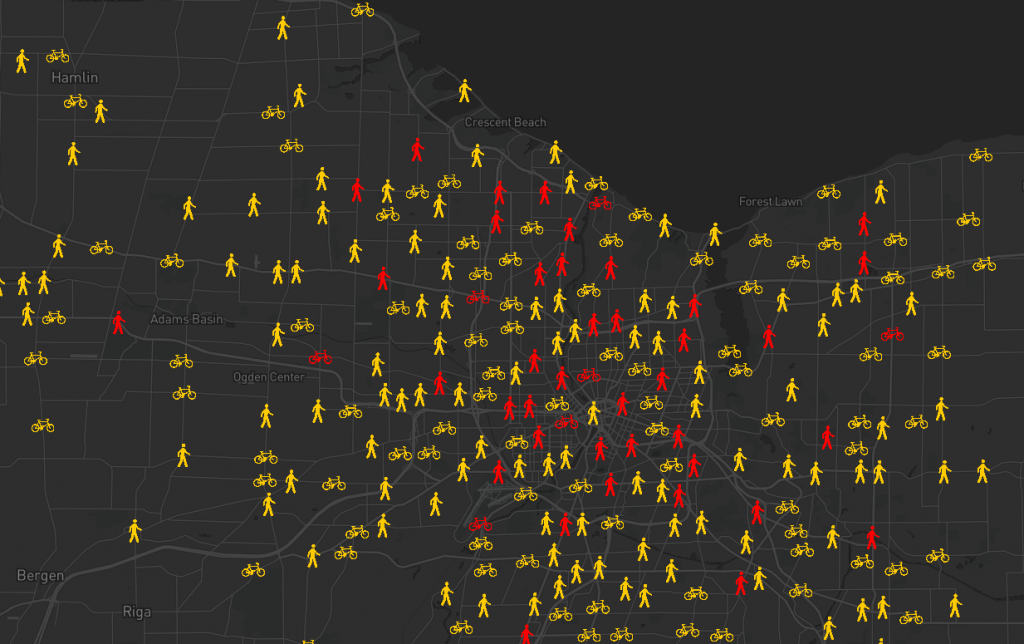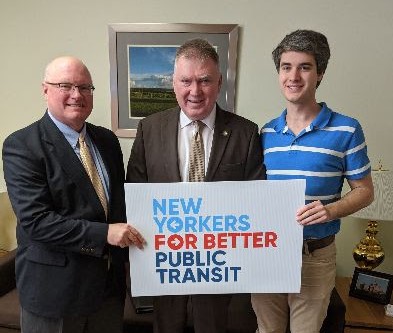by Jesse Peers, Cycling Coordinator at Reconnect Rochester
When I saw the trailer for Why We Cycle years ago, I instantly knew how special this film was. Finally someone had made a gorgeous film about the myriad of reasons why people all over the world choose to traverse their communities by bike. I’m glad we were able to screen the documentary for a Rochester Street Films event in September 2020 and use it as a springboard to discuss local values and goals.
If you haven’t seen the film or weren’t able to take part in our panel discussion, watch them here.
As our moderator, Mona Seghatoleslami, wrapped up the great discussion that evening, she said, rightly so, that “this is just the beginning of a lot of things.” Let’s examine several takeaways from the film itself, the chat amongst viewers, and our panel discussion, and where we go from here.
Culture at Large
Some participants felt our screening of this Dutch film was too lofty and dreamy. In terms of culture-at-large, we agree. Comparing the Netherlands and ROC is apples to oranges. Dutch culture is indeed vastly different! The Netherlands prides itself on having an egalitarian society, in which they strive for everyone to be shown respect. If you haven’t noticed, the U.S. has much room to improve in this regard to say the least. But that doesn’t mean we have to overturn societal values before we can become a more equitable community in terms of mobility, though that won’t keep us from trying. Other cities of all sizes surpassing Rochester in the national bike rankings proves this.
Being Vigilant and Showing Up
Our panelists made clear that to attain better bike infrastructure, it takes being involved in the process, showing up at meetings (even virtual ones these days) and organizing ourselves. As the old adage goes, “if you don’t do politics, politics will do you.” If the bike community was under the impression that after the adoption of the 2034 Plan, which encourages implementation of “complete streets” designs that accommodate ALL modes of travel, that this would happen overnight with no need for continued advocacy, we were mistaken (see State Street).
One of the words that was spoken over and over during our panel discussion, particularly from Brighton’s Robin Wilt, was “demand.” Just as the Dutch rose up in the 1970s to demand safer road conditions and greater accountability, the active mobility community is going to have to demand safer streets that are designed for all modes of travel, not just cars. We have to keep our leaders accountable to the 2034 Plan, remind them of their values and goals, and when opportunities arise, vote for leaders who stand behind this progressive, multimodal vision.
The Rochester Cycling Alliance (RCA) does our best to get the word out about public input sessions and other advocacy opportunities. Please make sure you’re on our mailing list and take those opportunities to provide input.
Rochester’s not a bad biking city!
There were varying opinions held by viewers about Rochester’s bikeability — some negative, some positive. Let’s look at the bright side first and identify some of Rochester’s advantages participants took note of in the chat: We are blessed to have the Genesee Riverway Trail, Erie Canal Trail, and an abundance of water and stellar public parks in our community. People pay a lot of money to come from all over the world to Cycle the Erie and we have free access nearby! Overall Rochester is pretty flat, which makes getting somewhere by bike less arduous. And the average city resident has a 4.1-mile commute to work, a journey that can be done by bike at a casual pace in less than 25 minutes.
As several people pointed out in the chat, Rochester has an impressive bike culture for a city of our size. There’s a wide variety of groups with different riding styles, and open-invite group rides take place most evenings during the riding season.
Rochester was awarded a bronze level status as a Bike-Friendly City by the League of American Bicyclists in 2012, 2016 and 2020. That’s not bad! A bronze status means we’re on the right track. Yes, there is a lot to be improved if we want to reach silver or gold, but we are a decent biking city already. In fact, I firmly believe Rochester could become the best biking city in the Great Lakes. It’s more within reach for us than other cities due to the advantages noted above. I know many people who are already of the opinion that Rochester is one of the #BikeLife’s greatest secrets. There are affordable neighborhoods within a 15-minute ride of downtown where car-free living is absolutely attainable. If biking on busy, main thoroughfares isn’t your thing (we don’t blame you!), often there are parallel side streets through residential neighborhoods that will get you to your destination in a timely, less stressful way. If you want to get more comfortable on your bike, consider signing up for one of our on-bike classes sometime.
Our Biggest Weakness: Not Zooming Out
Yes, Rochester is making progress in expanding our bike infrastructure. But there was a consensus on participants in the chat that the current process doesn’t work. As it is now, bike infrastructure is installed “where possible” along small, segment-by-segment stretches. Each self-contained project is overseen by a different design firm and it’s apparent there is no overall network vision guiding this process along predetermined priority routes. Because of this, we get a piecemeal, patchwork result where you can bike on one street for several miles and encounter bike lanes, sharrows or nothing at all.
Even the gorgeous cycletrack along Union Street got knocked pretty hard during our chat: It sure is pretty, but what’s it supposed to do? It doesn’t go anywhere and, as bidirectional cycletracks on one side of the street often do, it creates awkward transitions for those on bike.
“There’s a consensus emerging in the bike world that it’s more about quality of bike infrastructure than quantity (how many miles of bike lanes doesn’t matter as much as how safe & stress-free those miles are).” ~Brent Toderian
Furthermore, though the City is chipping away at its Bike Master Plan, albeit in small, often disconnected pieces, the suburbs for the most part have yet to get on board. Cyclists might be somewhat comfortable on some city streets with bike infrastructure and lower speed limits, but once they cross the city line into surrounding towns, that infrastructure disappears too much of the time.
Instead of a city full of bike lanes which are uncomfortable for most residents, we need to focus on less mileage but higher quality (protected!) bike lanes along strategic routes. Rochester and Monroe County could also use a more top-down “let it be!” approach when it comes to a usable bike network.
“The fast implementation of projects proved to be far more effective than the traditional model of attempting to achieve near unanimity on projects even when you already have consensus that the status quo doesn’t work. Efforts to reach an idealized consensus have resulted in years of indecision, inaction, and paralysis-by-analysis.” ~Streetfight (Sadik-Khan and Solomonow)
Getting local leaders out of their cars
This next topic brought up by participants is probably unrealistic, but holy moly would it move the needle like nothing else! (And it was discussed on September 12th): Getting elected officials, engineers and planners out of their cars. I suspect that many people in our governments and design firms who design and approve bike infrastructure, may never use that bike infrastructure themselves. If officials had to bike solo in rush hour through every segment of infrastructure they approved, we’d likely see very different bike infrastructure.
“In my perfect world, anyone working on bicycle infrastructure or planning should be handed a bicycle and told to ride it in their city for a month…That would certainly force the issue in the minds of the inexperienced or skeptical. We have been thinking car-first for decades, and that worked out pretty well for motorists and the engineers who cater to them. Now it’s time to switch it up.” ~Copenhagenize (Colville-Andersen)
More than a quarter of Rochesterians don’t drive everywhere, either by need or by choice. How incredible would it be for elected officials to show solidarity with their constituents and get around town a quarter of the time without their cars?
“When I look around the world at the growing list of cities that are once again taking the bicycle seriously, I can identify one primary factor: political leadership. Advocates and activists continue to do their part, pushing from the bottom upward. At the end of the day, though, it seems that policymakers exercising top-down leadership are the catalysts for real change…Politicians may notice…a personal brand boost when they take matters to the next level.” ~Copenhagenize (Colville-Andersen)
Representing All
Finally, panelist Mitch Gruber urged Rochester’s active mobility and bike community to do a better job of outreach to neighborhoods that don’t look like us – of listening to people who use their bikes in different ways than we do. This is something Reconnect Rochester is committed to working on. Our recent signing of the Greater Rochester Black Agenda Group’s statement that Racism is a Public Health Crisis was only a start.
Going into 2021, join us in being vocal about the benefits of biking to elected officials, stay tuned for advocacy opportunities, and join us for one of our workshops and cyclist gatherings in 2021.
Want to join the RCA email list to stay abreast of these opportunities? Drop me a note at jesse@reconnectrochester.org and request to be added!


